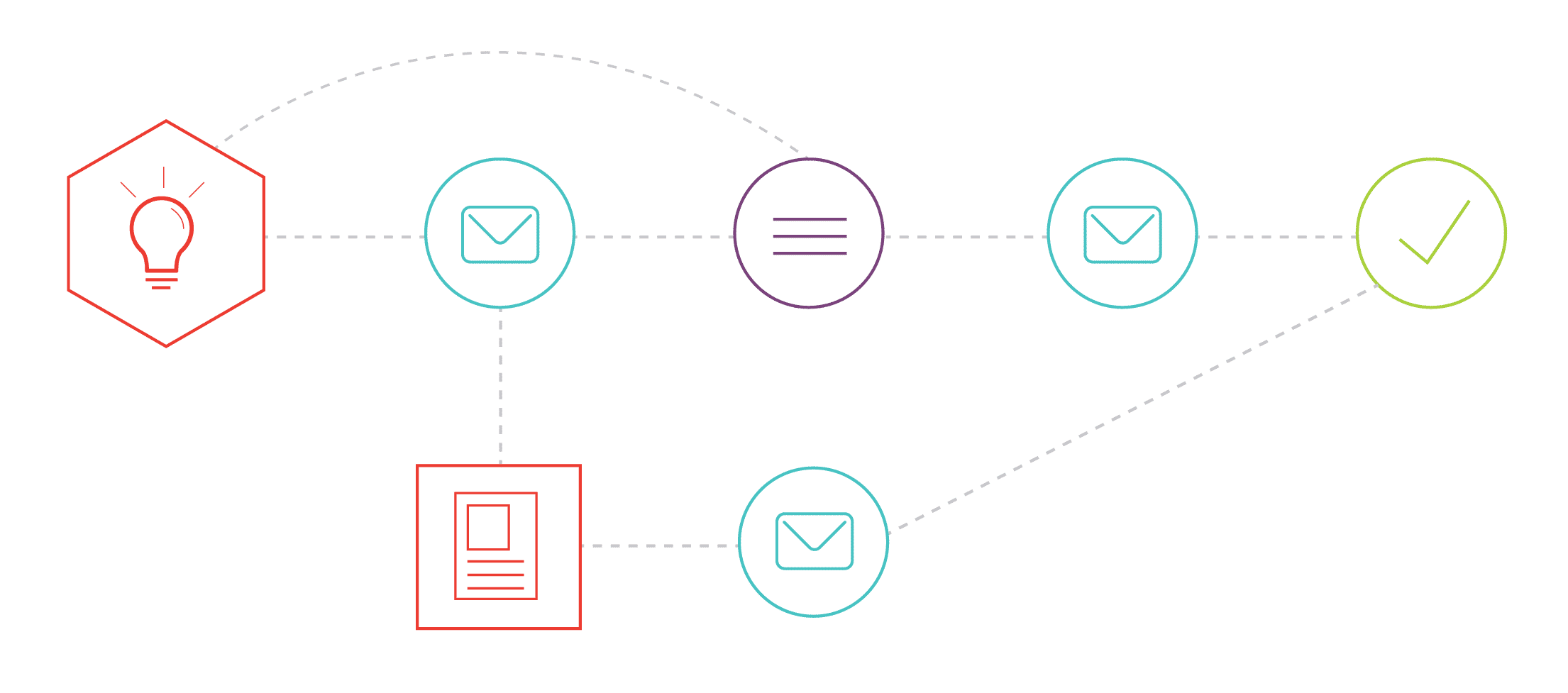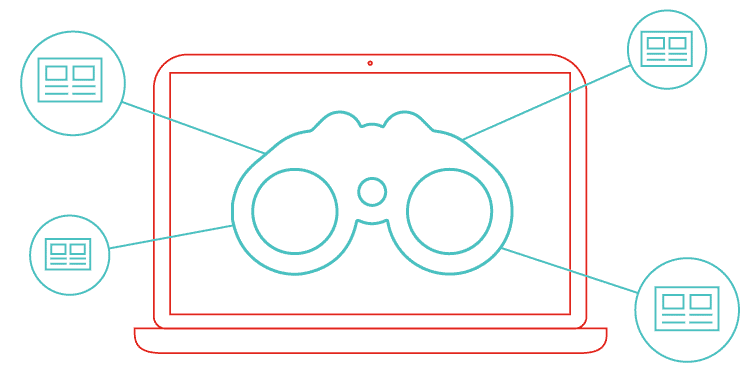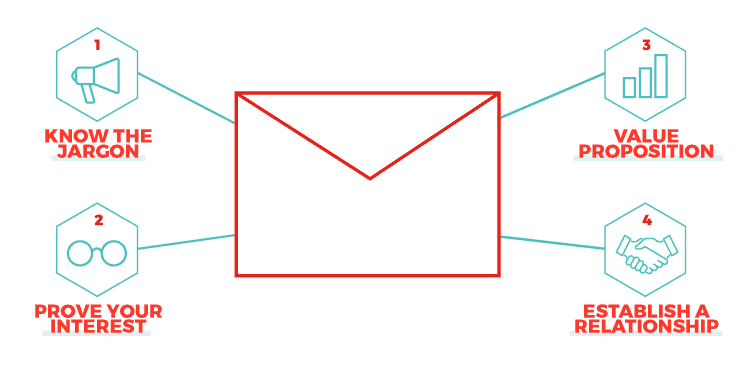For years now, collecting and analyzing big data has been a foundation of digital marketing. By conducting market research and studying consumer behavior online, companies have the ability to pinpoint their target audience and predict their actions.
Detailed data analysis has paved the way for micro-targeted marketing strategies. Digital marketers can narrow the scope of their efforts to target the exact audience that is most likely to purchase their company’s products or consume their content. Micro-targeted audiences tend to fall along the lines of demographics, such as gender, socioeconomic standing, age, and location—or, they mirror specific interests, needs, or an individual’s position along a particular customer journey.
When it comes to link building, SEOs and digital marketers employ a mix of two strategies:
- Casting a wide net in an attempt to reach a large audience.
- Focusing on micro-targeted audiences—informed by data analysis—to reach people with deeper niche interests or greater purchase intent.
What does micro-targeted marketing look like when it comes to link building and email outreach? Digital marketing teams can adjust their link building tactics for more focused audiences by modifying the following aspects of their email outreach process.
Optimizing Workflow

When it comes to management and workflow, link outreach for micro-targeted audiences doesn’t diverge much from standard link building practices. In general, the same principles apply; you’ll need a clear strategy and timetable for generating a list of targets, sending outreach emails, tracking responses, and seeing content through to publication. However, a few specialized outreach tactics will help you secure backlinks from niche blogs and publications.
1. Resist the Pressure to Automate Everything
Yes, there are plenty of advanced tools on the market that automate email outreach and streamline the entire link building process. However, software-driven outreach and emails created from generic templates won’t work when targeting a niche market. While automation may come in handy if your strategy is to cast a wide net, it won’t get you far if you hope to create connections within a specialized industry that has a smaller audience.
When marketing niche content, a few backlinks from focused websites will do more for your site’s traffic and SEO than a multitude of backlinks from websites that are less relevant to your target audience. In other words, think quality over quantity when developing your micro-targeted link building strategy.
2. Keep Close Track of Niche Competitors
While monitoring the competition is essential to any link building strategy, it should play an even more fundamental role if you’re targeting highly specialized content for backlinks. While there may be fewer players in niche markets, there’s also less content on the web that’s relevant to your shared clientele.
To become an authoritative voice within the industry, you’ll have to create strong relationships with the limited number of bloggers and publications that serve your audience. If a site manager already has a close connection with your competitors, they may hesitate to link to your website. Use a backlink checker to find where your competition has backlinks, and try to target those websites before they solidify a stronger partnership with your rivals.
Finding the Right Sites for Outreach

The success of a link building outreach campaign largely depends on the quality of websites chosen for backlinks. By that I mean you’ll want to consider each site’s traffic, page rank, content quality, and other SEO metrics. On top of that, you should focus your efforts on websites that will help you reach your micro-targeted audience.
1. Consider Complementary Niches
Micro-targeting an audience doesn’t mean that all your backlinks have to come from hyper-focused content. When conducting outreach for link building, remember to consider sites with complementary or tangential content. Doing so will naturally increase the number of backlinks you can secure and drive site traffic.
For example, a company that sells comfortable sneakers may create a guest blog post about everything backpackers need to prepare for a long trip. The sites they reach out to won’t be focused on footwear, but the readers would still find the sneaker recommendation relevant and useful.
While it may seem counterintuitive to broaden content and reach out to websites beyond your niche, doing so improves micro-targeted marketing campaigns by:
- Diversifying the content you distribute. This, in turn, expands the opportunities you have to reach out to new websites for backlinks.
- Exemplifying the broader appeal of “boring” niches or products.
- Showing people outside of your target demographic the relatability of your company’s content or the usefulness of your products and services.
- Attracting outsiders and “converting” them to your target audience by introducing them to something they may have never heard of or knew they needed.
2. Scour Social Media
Social media is a great tool to drive website traffic in and of itself, but it’s also useful for generating lists for email outreach. Social media platforms connect like-minded individuals. Tools such as Facebook Groups bring together people from all across the world who share a common interest, no matter how obscure. Similarly, hashtags sort content and users around particular topics of conversation.
Using social media platforms, you can learn valuable insights into where your micro-targeted audience spends its time online and what type of content they read and share. Furthermore, many social media users who are passionate about a subject, hobby, lifestyle, or kinds of products also run online blogs. Based on their follower counts, you can get a good sense of who has a website worth pursuing for backlinks. Simply follow the links from their profiles and find their contact information for outreach.
Constructing Outreach Emails
Now that your marketing team has solidified an efficient plan for workflow and identified targets for outreach, it’s time to focus on your email pitch. No matter how strong the content you’re distributing or how useful the backlink your suggesting, none of your efforts matter if you can’t sell the added value in a succinct email. When conducting a micro-targeted outreach campaign, consider the following tips for email generation.

1. Get to Know The Jargon
To secure backlinks from blogs and online publications, you first have to earn the trust of the publisher and demonstrate your knowledge of the targeted content. Often, marketing teams split up the work for email outreach campaigns; the people creating content for landing pages or writing guest posts to pitch to blogs aren’t typically the ones drafting outreach emails. If this is the case, you need to bridge any disconnect between the email composer and the content they’re promoting.
A great way for outreach specialists to demonstrate their expertise is to become familiar with industry-specific jargon. Using the same language as the website you’re targeting helps prove to the site administrators that your links are relevant, trustworthy, and will appeal to their readers. Conversely, if a blogger spots improper use of industry terminology, they’ll likely write you off automatically.
2. Prove Your Interest in the Specific Link Target
Outreach emails should show that you have invested interest in the content that your target audience consumes. When contacting a blogger or editor, prove that you’ve done your research and understand not only the site’s niche audience but its voice and style as well.
For example, you could compliment the website for fulfilling a specific consumer need or addressing a subject that’s been missing from industry conversation. Reference a specific post on their site and why you value their content.
Doing so will not only prove your industry knowledge; it will also show that you’re focused on the needs of the target demographic. Also, paying a genuine compliment can set out apart from other companies asking for backlinks.
3. Make Clear Value Propositions
Every link building outreach email should have a clear and concise request and value proposition. Remember, you’re asking the blogger or site editor for a favor and a vote of confidence; no website manager will waste their time adding backlinks if there isn’t anything in it for them and their readers. In a concise but persuasive manner, explain why your website is worth linking to or how your guest post will directly benefit readers.
4. Establish a Relationship
As aforementioned, niche markets have a lower volume of relevant online content than broader industries. When micro-targeting an audience, you’ll have a limited set of bloggers and publications to work with. Whenever you reach out and request a backlink, treat the email as an introduction to an advantageous business connection.
You want to be professional, make reasonable requests, and show gratitude. That way, site managers will look forward to working with you again in the future and can even recommend your website to other players within their online community.
Managing Micro-Targeted Outreach
While initially based on complex data science, micro-targeted marketing has very practical implications for the manual side of marketing. When it comes to creating relevant content and drafting personalized outreach emails, focused on a micro-targeted audience gives you the opportunity to show consumers your nuanced understanding of their needs and your company’s dedication to providing solutions.




